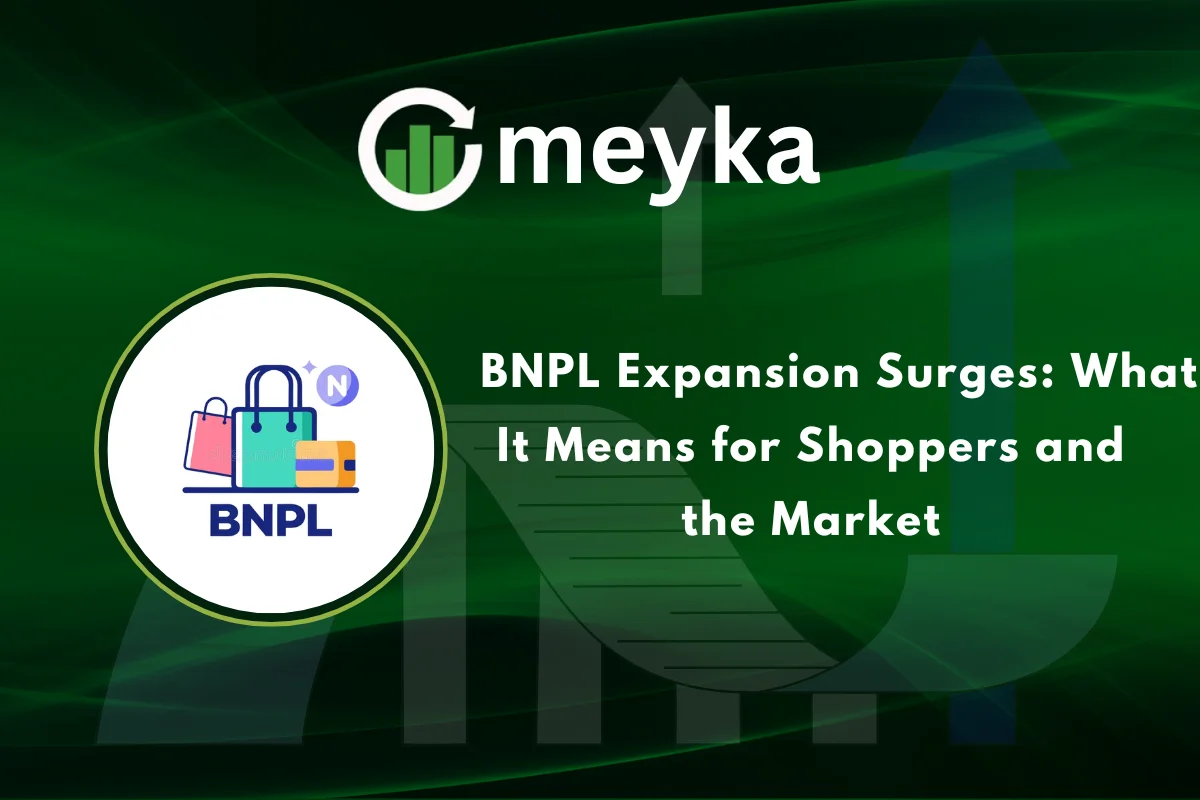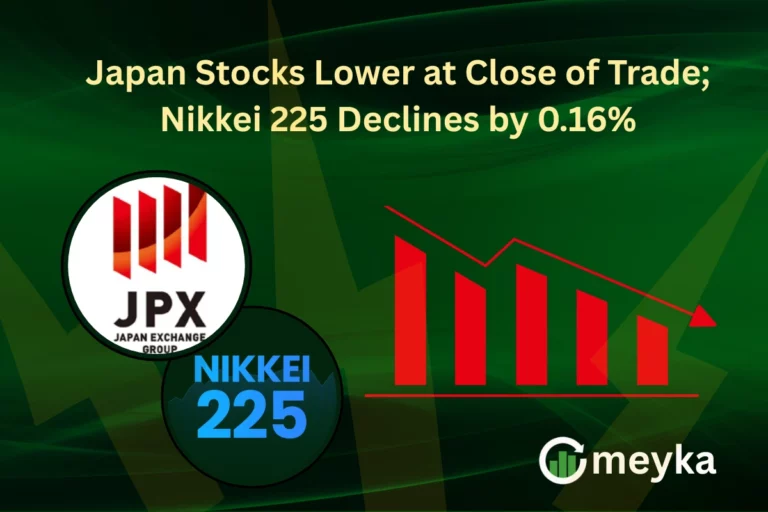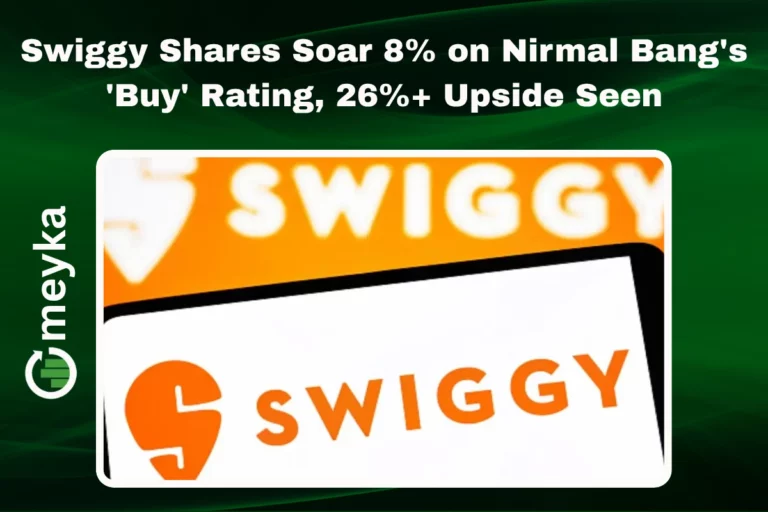BNPL Expansion Surges: What It Means for Shoppers and the Market
The global financial landscape is shifting, and one of the most noticeable changes is the rapid rise of Buy Now, Pay Later (BNPL) services. Once a small segment of the fintech world, BNPL has become one of the fastest-growing payment methods worldwide. Consumers are embracing flexible installment payments, retailers are integrating BNPL into their checkout systems, and investors are closely watching how this trend affects the broader stock market.
As BNPL continues its expansion, it is reshaping spending habits, influencing business strategies, and capturing regulatory attention. Understanding this growth is essential for shoppers, companies, and market participants alike.
BNPL Becomes a Preferred Option for Everyday Shoppers
Consumers today want flexibility, transparency, and control. BNPL offers all three. Instead of paying the full price upfront, shoppers can divide payments into smaller installments, often without interest. This structure appeals especially to younger generations who are avoiding traditional credit cards. They appreciate the simplicity of BNPL platforms and the ability to manage payments digitally.
Economic pressures, such as inflation and rising daily expenses, are pushing more people toward BNPL as a budgeting tool. Reports from regulators like the Consumer Financial Protection Bureau (CFPB) show a significant increase in BNPL usage among millennials and Gen Z. These users view BNPL as a practical way to buy what they need without committing to long-term debt.
More importantly, consumers say BNPL gives them confidence. They can shop without worrying about high interest rates or complex credit agreements. This sense of control has played a major role in BNPL’s fast adoption.
Retailers Benefit From Higher Sales and Stronger Loyalty
BNPL’s rise is not only a consumer trend. Retailers are adopting it because it helps them stay competitive. Offering BNPL at checkout means giving shoppers an easier path to completing their purchases. Many businesses have reported that customers are more likely to finalize orders when BNPL is available. This reduces cart abandonment and often increases the total value of each purchase.
Brands across fashion, electronics, beauty, travel, and home goods have integrated BNPL into their platforms. Companies like Amazon, Apple, Nike, and Target highlight BNPL as a key feature in their payment options. Smaller retailers benefit as well, gaining an advantage by offering flexible payments without creating their own financing systems.
BNPL has essentially become a standard part of modern retail. Consumers now expect to see BNPL options when shopping online, and retailers who fail to offer it risk falling behind competitors.
BNPL Expansion Draws Investor Attention in the Stock Market
The rapid growth of BNPL is also influencing financial markets. Investors are closely monitoring BNPL companies and the industries connected to them. Providers such as Affirm, Afterpay, and Klarna have become major topics in stock research, especially regarding revenue potential and user growth.
Investors believe BNPL is becoming more than a payment feature; it is turning into a foundational part of the global fintech ecosystem. As the industry expands, analysts expect increased revenue from merchant partnerships, interest-bearing plans, and financial services linked to BNPL ecosystems.
Another reason the financial world is paying attention is BNPL’s use of artificial intelligence. Modern BNPL platforms rely on AI to evaluate risk, detect fraud, and personalize payment options. This connection has led to rising investor interest in AI stocks, especially companies that provide credit-scoring, machine-learning, and payment-processing technologies.
Competition is also heating up. Traditional banks and credit card companies are entering the BNPL market to maintain relevance. Fintech startups are innovating faster, and large tech companies are developing their own BNPL systems. This competitive landscape creates new opportunities and risks for investors.
Regulators Respond to Rapid BNPL Growth
As BNPL becomes mainstream, governments and regulatory bodies are increasing oversight. Authorities in the United States, the United Kingdom, Australia, and the European Union are exploring new rules to protect consumers. Their concerns include late fees, overspending, debt accumulation, and data privacy.
Some regulators argue that BNPL functions similarly to credit and should therefore follow stricter financial standards. Others focus on transparency, ensuring that consumers understand repayment terms before committing. The Financial Conduct Authority (FCA) in the UK and the CFPB in the U.S. have already begun investigations and proposed guidelines to strengthen consumer protections.
While increased regulation may challenge BNPL providers, many experts believe it will build long-term stability and trust within the industry.
BNPL Is Reshaping Consumer Spending Behavior
The impact of BNPL extends far beyond checkout pages. It is fundamentally changing how people approach budgeting and financial decision-making. Many consumers prefer BNPL because it allows them to spread costs without interest and without the pressure of traditional credit cards. They see it as a safer, more controlled form of short-term borrowing.
However, the convenience of BNPL can have downsides. Research from the Federal Reserve shows that some users accumulate multiple BNPL plans and lose track of payments. This can lead to late fees and financial stress. Experts emphasize that consumers must track their spending carefully, especially when managing multiple installment plans.
Still, for responsible users, BNPL remains a valuable tool. It provides structure, clarity, and predictable payments, features that traditional credit products often fail to deliver.
BNPL Goes Global as Digital Payments Grow
The expansion of BNPL is not limited to Western markets. It is spreading across Asia, the Middle East, Africa, and Latin America at a remarkable pace. Countries in the Asia-Pacific are leading the global increase, with strong adoption in India, Singapore, and Indonesia. Many African markets are using BNPL through mobile banking systems, while Latin America is integrating BNPL into growing e-commerce platforms.
This worldwide adoption is boosting fintech innovation and encouraging cross-border investment. BNPL is becoming a global standard in online and offline checkout experiences, making it one of the most influential financial trends of this decade.
The Future of BNPL: Smarter, Wider, and More Regulated
Looking ahead, BNPL is expected to evolve in several important ways. Companies are investing heavily in AI-driven tools to personalize repayment plans and assess financial behavior. Regulators will likely strengthen consumer protection rules, leading to clearer terms and safer usage. BNPL may also move beyond retail and into sectors like healthcare, education, auto services, and travel.
As digital payments continue to grow, BNPL is positioned to become a permanent feature of global commerce. Its blend of flexibility, simplicity, and accessibility ensures that it will remain a key part of both consumer spending and financial innovation.
FAQs
Younger shoppers prefer BNPL because it offers interest-free payments, clear timelines, and easy digital approvals without relying on credit cards.
Most BNPL plans do not affect credit scores unless payments are missed. Late or unpaid installments may be reported, depending on the provider.
BNPL is safe when used responsibly. Consumers should track their payments carefully and avoid taking on more plans than they can manage.
Disclaimer:
The content shared by Meyka AI PTY LTD is solely for research and informational purposes. Meyka is not a financial advisory service, and the information provided should not be considered investment or trading advice.






